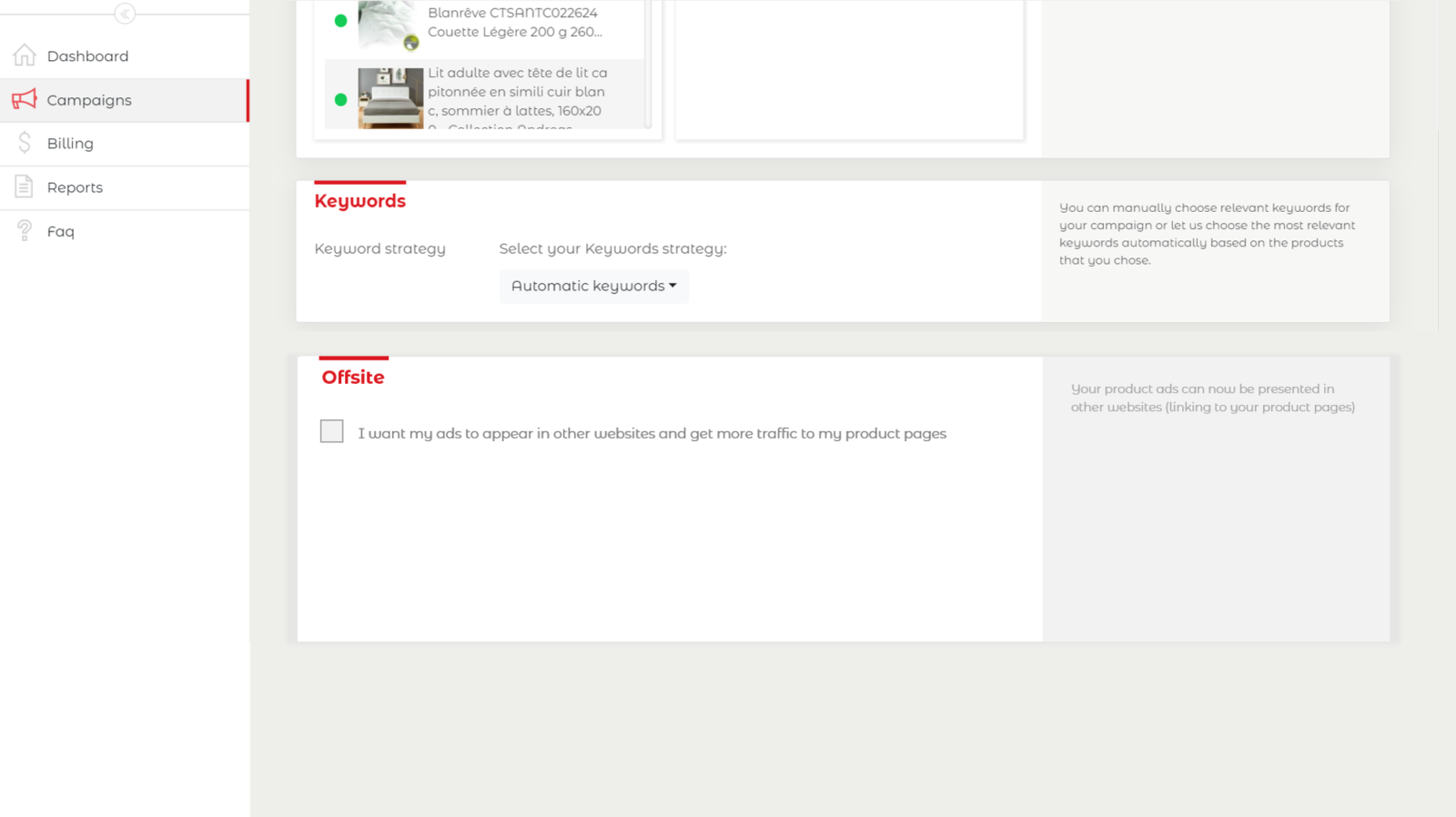Introducing Mabaya Offsite Ads

Today most of the big online retailers and marketplaces that offer Sponsored Product Ads are facing the problem of not being able to utilize all the budget that the sellers and brand partners want to spend on their websites.
The unused budget is actually an opportunity and the stores are in search for ways to use it.
The solutions can be internal (adding more ads and touch points, increasing the CPC and ACOS, improving the ad serving algorithm, getting more traffic to categories with low ad fill rate etc.) but it can also be external (spend some of the unused budget elsewhere).
Etsy for example is doing both:
“Sellers give us more funds than we are currently able to spend by a fairly meaningful amount … I think we’re still in relatively early innings on Promoted Listings, but it’s going to be more and more about how good our algorithms. And then the opportunity to help our sellers invest in their growth, not just on Etsy, but off Etsy, and we know that there is a significant appetite from sellers to invest, to buy traffic from other sources, driving it to their Etsy shops, and thinking about ways to help them with that we think is also a rich opportunity going forward.”
Bigger elsewhere
Offsite ads enable sellers and brands to allocate part of the Sponsored Product Ads budget to promote their products outside the store by serving product ads through ad networks (Product Ads on Google for example).
By offering the offsite ads the store can easily utilize the unused budget, generate incremental revenue stream and get more traffic that is paid by the sellers and brand partners (which also enables to reduce the marketing budget).
The sellers and brand partners are getting an easy and transparent way to get more shoppers to their product pages (using one campaign for both in-store and offsite ads) and utilize their advertising budget, especially if they are selling niche long tail products that are not getting enough in-store impressions.
The offsite ads might under perform compared to the Sponsored Product Ads because they find the shoppers outside the store when their purchase intent is probably lower but it would still get better results than other advertising channels.

Offsite ads as part of the holistic eCommerce media approach
The main purpose of the offsite ads is to seize the opportunity and utilize the unused budget of the Sponsored Product Ads. Therefor Offsite ads should be offered as part of the store’s Sponsored Product Ads solution and not as a separate stand-alone feature.
When there is a unified budget for Sponsored Product Ads and offsite ads the store can optimize the budget for the benefit of both the sellers and the store. It can spend as much as possible on Sponsored Product Ads that perform better for the seller and are more profitable for the store and only then shift budget to offsite ads. It will also enable to avoid self competition (with the store’s own advertising).
Moreover it enables the store to simplify the process for the sellers and brand partners by adding an option to “turn on” offsite ads when creating a sponsored product ads campaign (with the same products and keywords) and then manage them together instead of having to create and manage 2 separate campaigns.

The unified budget makes it “risk free” for the sellers as they are not asked to add additional budget to their sponsored product ads budget.
With the simplicity of the campaign creation and management and the risk-free approach, it is easier to engage the sellers and brand partners with the offsite ads.
How does it work?
The store defines what is the max percentage of the campaign budget that can go to offsite ads.
When an offsite ads campaign is running the ad server will prioritize the Sponsored Product Ads making sure that the store keeps the max potential budget for in-store ads before shifting budget to offsite ads.
The budget that will eventually go to offsite ads would be between zero (in case that the store can utilize all of it with Sponsored Product Ads) and the max percentage that the store defined for offsite ads.
The creation of the offsite campaign will be part of the Sponsored Product Ads campaign creation and the campaign management will also be done together with the Sponsored Product Ads.
There will be an option to monitor and manage the campaign as one (both sponsored products ads and offsite ads) or separately (for example exclude products or keywords that don’t perform well only from the offsite ads campaign or the sponsored product ads campaign).
The offsite ads performance will be transparent and the sellers and brand partners will be able to see how much they spent on offsite ads also in the payment page and the different reports.
If you want to join the beta please contact your account manager.
If you are not yet using Mabaya Sponsored Product Ads suite give us a call and we will be happy to chat and give you a demo.
About Mabaya
Mabaya’s Sponsored Product Ads platform is a white label solution for marketplaces and online retailers who want to run their own ecommerce media and enable their sellers and brand partners to promote their products within the store. The company has vast experience in the ecommerce media space, serving billions of Sponsored Product Ads for major ecommerce sites.

